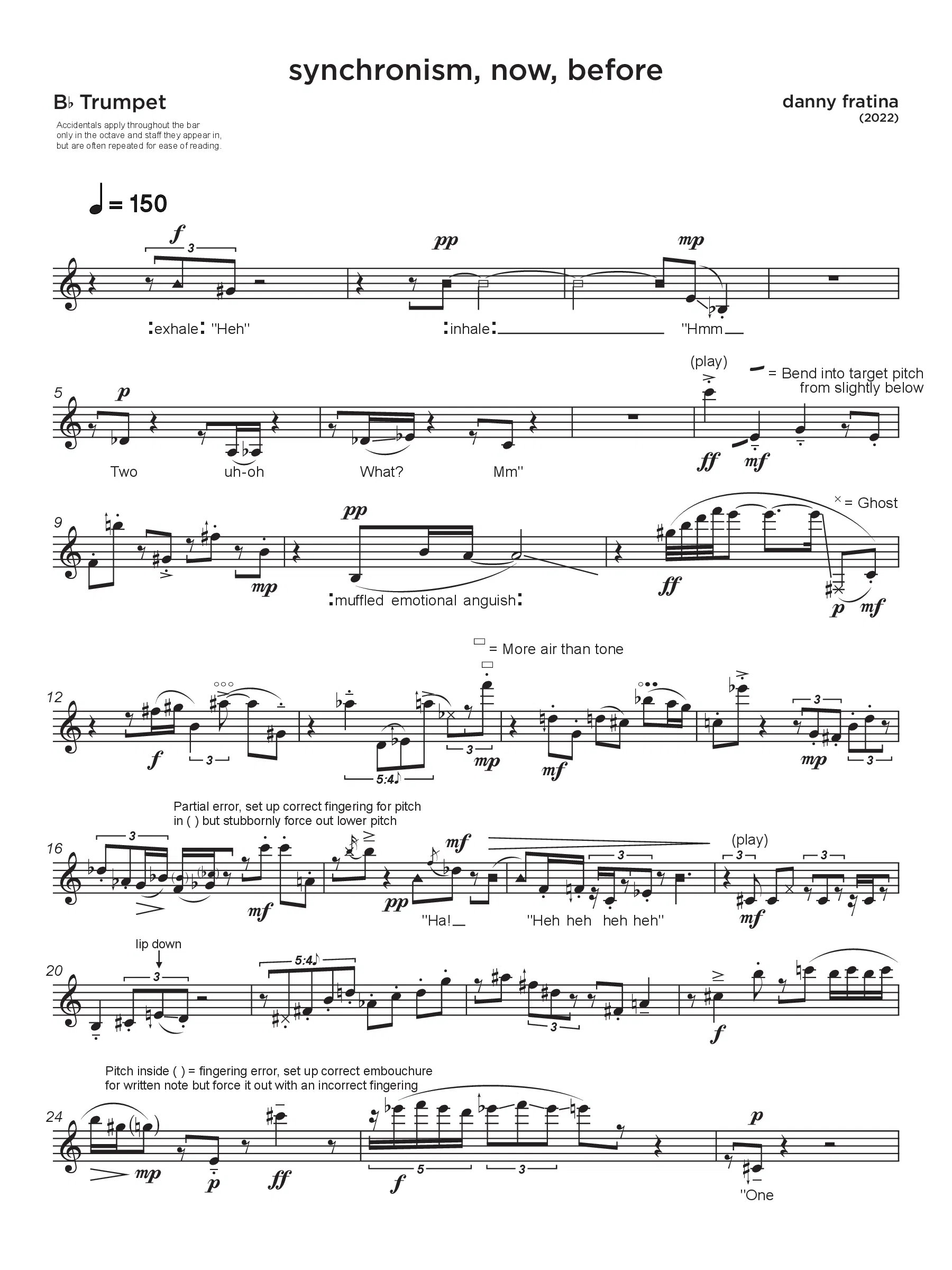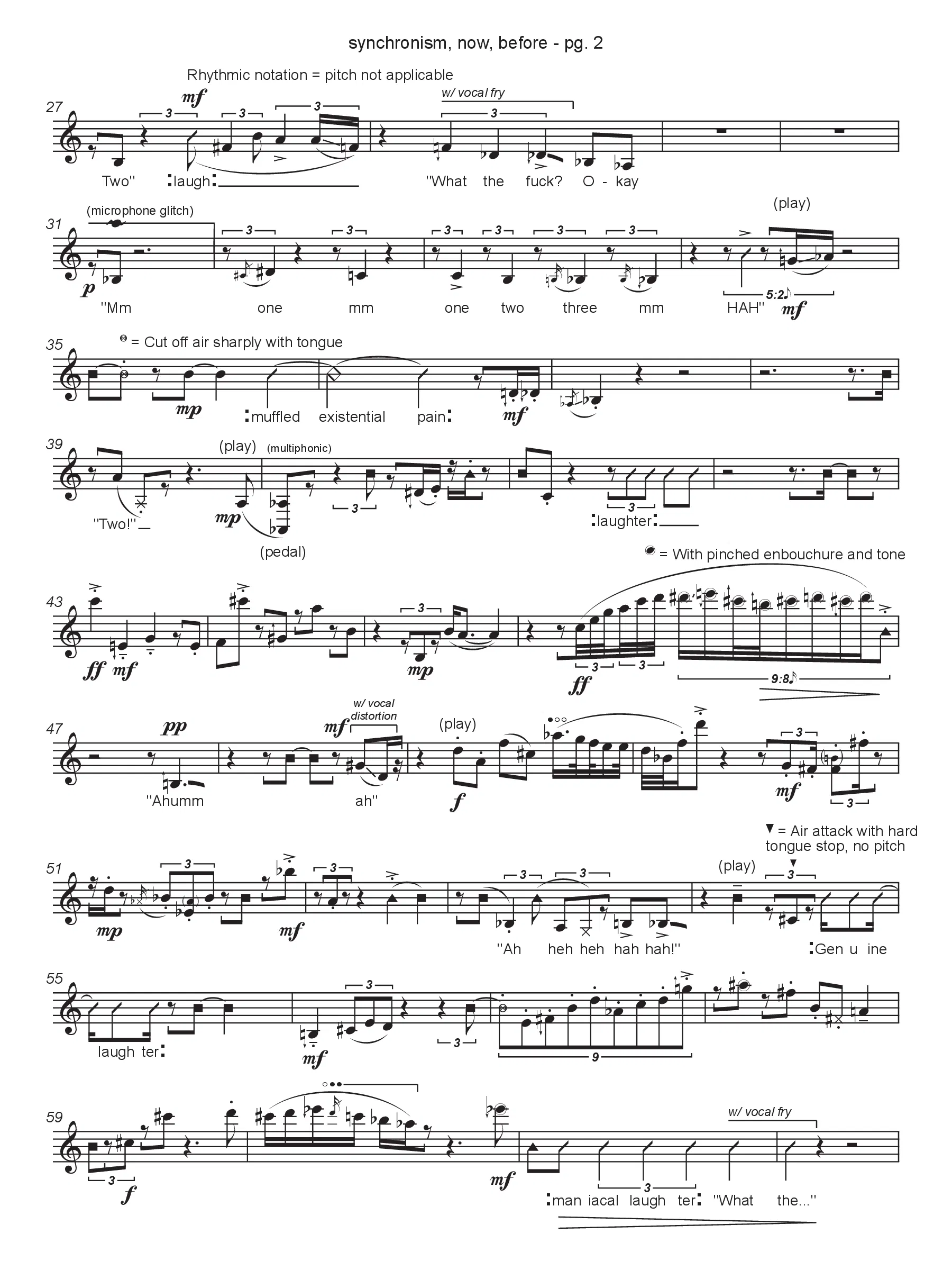

1 / 8
0:00/0:00
Solo
2022
Trumpet
- Program Notes
synchronism, now, before is an interrogation of performance temporality, questioning the relationship between composer and performer and the flawed nature of transcription as a musical linguistical tool. Sometimes supportive, sometimes antagonistic, the dynamic between what should be and what was played is one that hinges on communication and intent. This is often expressed through notation, but to what extent do our tools for communication fall short of normal expressive functions? Featuring a solo trumpet player stuck in a loop of composition, recording, and transcription, synchronism, now, before, is a piece that will always be a step out of time with itself.
- Recording Notes
Trumpeter Sam Dechenne was told to sight-read an original work by the composer and record a single-take session. The performance was then transcribed by the composer and engraved as a new piece. Sam was then asked to again sight-read this NEW piece of music and record a new single uninterrupted take. This back and forth process of Sam reading a transcription of his last performance repeated another 5-6 times. All of Sam's performances were sequentially captured in notation and the audio recordings were sequentially combined and aligned to fit the transcription—the original piece of music that started the project has been deleted, and now Sam's performance and notation are all that remain. Thus, what you HEAR is Sam's interpretation of earlier bars of engraved music—or, what you SEE is an engraved transcription of earlier seconds of performed music. You are seeing and hearing a musician playing outside of time as we normally operate in, creating an original (and somewhat collaborative) piece of music based on the retrospective tool of transcription, putting under a microscope its uses and flaws, and how the tool and real-world musical realizations that incorporate that tool intersect with the human effort to engage with it.
- Performer Credits
- Sam Dechenne
- External Links